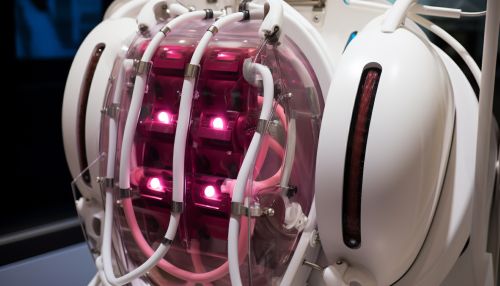Artificial Kidney
Introduction
Artificial kidneys are a type of biomedical device designed to replicate the functionality of natural kidneys. They are primarily used in the treatment of renal failure, where the patient's natural kidneys are no longer able to effectively filter waste products from the blood. The development and implementation of artificial kidneys have revolutionized the field of nephrology, providing a life-saving treatment option for patients with end-stage renal disease (ESRD).


History
The concept of an artificial kidney dates back to the early 20th century, with the first practical application of the technology occurring in the 1940s. The development of the artificial kidney was largely driven by the need for a more effective treatment for renal failure, which at the time was a largely untreatable condition. The first successful use of an artificial kidney to treat a patient with acute renal failure was reported in 1945 by Dutch physician Willem Johan Kolff, who is often credited as the father of artificial organs.
Design and Function
The primary function of an artificial kidney is to replicate the filtration process that occurs in natural kidneys. This is achieved through a process known as hemodialysis, in which the patient's blood is circulated through a machine that contains a semi-permeable membrane. Waste products and excess water in the blood pass through this membrane and are removed from the body, while essential elements such as red and white blood cells and plasma proteins are retained.
Types of Artificial Kidneys
There are several types of artificial kidneys currently in use, each with its own advantages and disadvantages. These include hemodialysis machines, peritoneal dialysis machines, and continuous renal replacement therapy (CRRT) machines. There is also ongoing research into the development of a wearable artificial kidney, which would provide continuous, ambulatory dialysis for patients, potentially improving their quality of life.
Clinical Use
Artificial kidneys are primarily used in the treatment of patients with ESRD, a condition in which the kidneys are no longer able to effectively filter waste products from the blood. They may also be used in the treatment of acute kidney injury (AKI), a sudden and severe loss of kidney function. The use of an artificial kidney can help to maintain the patient's fluid and electrolyte balance, prevent the accumulation of waste products in the blood, and reduce the symptoms of renal failure.
Future Developments
The field of artificial kidney technology is constantly evolving, with ongoing research aimed at improving the effectiveness and safety of these devices. One area of particular interest is the development of a bioartificial kidney, which would combine elements of traditional hemodialysis with living kidney cells in an attempt to more closely replicate the function of a natural kidney. This could potentially offer a more effective and less invasive treatment option for patients with ESRD.
